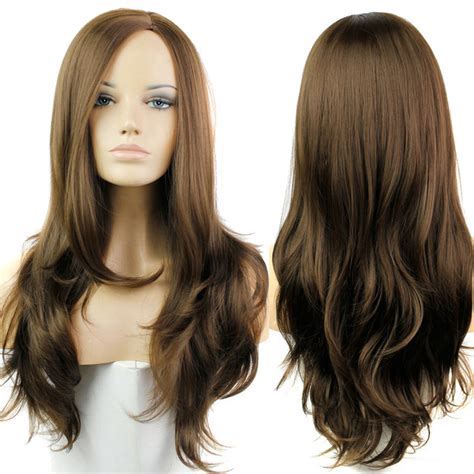French powder wigs, an iconic symbol of the 18th century, have captivated the imaginations of fashion enthusiasts and history buffs alike for centuries. These elaborate and highly stylized hairpieces played a crucial role in shaping the aesthetics and social conventions of their time.

History of French Powder Wigs
The origins of French powder wigs can be traced back to the ancient Assyrians, Egyptians, and Greeks, who used hair extensions and elaborate headdresses to signify status and power. However, it was during the reign of Louis XIV in the 17th century that powder wigs truly flourished in France.
Types of French Powder Wigs
There were numerous variations of French powder wigs, each with its own distinct style and purpose:
- Full-bottomed wig: The most elaborate and iconic powder wig, worn by royalty and the upper classes.
- Ramillies wig: A smaller, more natural-looking wig named after the Battle of Ramillies.
- Toupée: A half-wig or extension that covered the top of the head.
- Bishop’s wig: A large, round-shaped wig worn by clergy.
- Peruke: A practical and less formal wig, typically worn by middle and lower classes.
Construction and Maintenance
French powder wigs were typically made from human hair, which was painstakingly styled and powdered with a white substance, usually starch or rice powder. The construction process could take several weeks, and the upkeep was equally time-consuming. Wigs had to be brushed, combed, and powdered regularly to maintain their grandeur.
Social Significance
French powder wigs played a significant social role in the 18th century. They were a symbol of wealth and status, and their size and elaborateness reflected one’s place in society. The wearing of wigs also reinforced the strict social hierarchy of the time, as different types of wigs were reserved for specific ranks and professions.
Dimensions and Extravagance
French powder wigs were often enormous, reaching heights of up to 2 feet. They were adorned with ribbons, lace, and jewels, sometimes weighing several pounds. The most elaborate wigs required the services of wigmakers who specialized in creating these masterpieces.
Cultural Impact
French powder wigs have had a profound impact on fashion and culture. They have been featured in countless period dramas and historical films, contributing to the iconic imagery of the 18th century. Additionally, they have inspired contemporary fashion designers to incorporate elements of 18th-century style into their collections.
Modern Applications
While French powder wigs are no longer worn for everyday fashion, they continue to find inspiration and application in various fields:
- Historic reenactment: Wigs play a crucial role in recreating the authentic look and feel of the 18th century for historical reenactors.
- Theater and film: Powder wigs are used in stage productions and period films to enhance the characters and evoke the atmosphere of the time.
- Costume design: Designers draw inspiration from French powder wigs to create unique and eye-catching costumes for fashion shows, festivals, and events.
- Drag performance: Powder wigs have become a staple in drag performances, adding a touch of glamour and drama to the art form.
The numbers speak volumes about the impact of French powder wigs:
- Over 30 million wigs were produced in France during the 18th century.
- A high-quality wig could cost up to 1,000 livres (equivalent to several years’ wages).
- Wigmakers dedicated 10-15 hours each day to crafting wigs.
The concept of French powder wigs can inspire new creative endeavors:
- Wig-shaped furniture: Create whimsical and statement-making furniture pieces that resemble oversized powder wigs.
- Wig-themed decor: Design home decor items such as rugs, paintings, and lighting fixtures inspired by the elaborate patterns and shapes of wigs.
- WIGital art: Explore digital art forms that replicate the intricate details and textures of powder wigs.
- Fashion accessories: Incorporate elements of powder wigs into accessories such as handbags, jewelry, and scarves.
| Type of Wig | Size | Features |
|---|---|---|
| Full-bottomed wig | Up to 2 feet high | Elaborate curls, ribbons, jewels |
| Ramillies wig | 10-12 inches high | Natural-looking, shorter curls |
| Toupée | 6-8 inches high | Covered the top of the head |
| Bishop’s wig | 10-15 inches high | Round-shaped, voluminous |
| Social Significance | Meaning |
|---|---|
| Large wig | Wealth and status |
| Smaller wig | Middle and lower classes |
| Uniform wigs | Military and clergy |
| Fashion wigs | Reserved for fashionable individuals |
| Production and Cost | Figures |
|---|---|
| Wig production in 18th-century France | Over 30 million |
| Cost of a high-quality wig | Up to 1,000 livres |
| Hours spent by wigmakers per day | 10-15 |
| Modern Applications | Inspiration and Creativity |
|---|---|
| Historic reenactment | Authentic historical representation |
| Theater and film | Characterization and atmosphere |
| Costume design | Unique and eye-catching designs |
| Drag performance | Glamorous and dramatic effects |
- Q: Why did people wear French powder wigs?
- A: French powder wigs were worn primarily to signify wealth, status, and one’s place in the social hierarchy.
- Q: Were French powder wigs comfortable to wear?
- A: No, they were often heavy, hot, and required frequent maintenance.
- Q: How long did it take to make a French powder wig?
- A: The construction process could take several weeks.
- Q: Are French powder wigs still worn today?
- A: Not for everyday fashion, but they are still used in historic reenactment, theater, film, and drag performance.
- Q: What are some creative applications for French powder wigs?
- A: Furniture, decor, digital art, and fashion accessories.
- Q: What was the most elaborate type of French powder wig?
- A: Full-bottomed wig
- Q: Did everyone in France wear French powder wigs?
- A: No, they were primarily worn by the wealthy and upper classes.
- Q: What material were French powder wigs made of?
- A: Human hair
